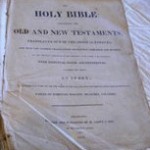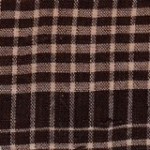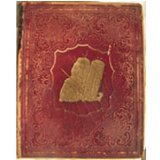Long before the advent of civil records, our ancestors realized the importance of preserving family history. Undoubtedly curious about their own forebears who were beyond the reach of oral tradition, they knew their descendants would be curious about their roots, as well. Maybe the inspiration for recording genealogical milestones in the family bible was “the begats” found in Genesis, Isaiah, and Matthew; or maybe families wanted their names inscribed in a place they knew would be treasured for generations; but whatever the origin, the tradition of recording births, marriages, and deaths fulfills a universal desire to let the future know: we were here; we loved; we celebrated; we mourned — we remember, and we want to be remembered.
You may already be blessed with one of these ancestral gifts, but the large, commanding family bibles, which used to be found reliably in most homes a century ago, are today rare. When my ancestor search obsession began, none of my relatives had a family bible. But knowing that such treasures do indeed exist, I went searching and discovered three rich repositories.
First, there is the Family History Library’s (FHL) amazing collection in Salt Lake City, easily accessed, even if you live half a world away. Many avid family history researchers are unaware that they can order microfilms from the FHL to be delivered to their own local Family History Centers. This service is provided to all — not just Latter-day Saints (LDS) members. Using the FHL Catalogue, search the “Place” category for states. The topic “Bible Records” will come up, most of which were compiled by the National Society Daughters of the American Revolution (NSDAR). Because we are such a mobile society, do not assume that each state’s records cover only that state. The bible for your Connecticut family may have wound up in Wisconsin, where the vital records were subsequently transcribed. Read the film notes and subject categories to see what locations are included on a microfilm roll. When you find a source of interest, you can order the microfilm online.
Second is the much under-utilized Ancestry.com resource: their own card catalogue. From the homepage, click on the “Search” button, and select “Card Catalogue.” In the next window, use the Keyword(s) box to enter “bible.” There are 68 titles available now, and this collection is growing.
Third, you will find the Family Bible Website where you can search the bible pages that have been entered, as well as contribute information from bibles you may own. You can also subscribe to their mailing list and request information about your ancestors.


If you would like assistance in locating family bibles or other resources that may exist for your ancestor searches, call the professional genealogists at RecordClick.







